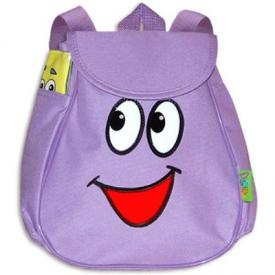
Check out the report from Consumer Reports below before shopping for a school bag for the kids.
Consumer Reports - all text is from their website... you can also visit there for a video too.
How to choose a backpack for back-to-school
When shopping for a backpack for your child, keep these guidelines in mind:
1. Inspect before you invest. Check carefully for:
•Sloppy stitching or loose threads, which can indicate poor manufacturing
•Raw, exposed fabric edges, which can fray and weaken the fabric, and possibly get stuck in the zipper
•Zippers without covering fabric flaps. In our rain test, zippers that were not protected by flaps of fabric allowed water to seep in.
2. One size does not fit all. Ideally, the bottom of the backpack should align with the curve of the lower back, and not be more than four inches below the waistline. A backpack's shoulder-strap anchor points should also rest 1 to 2 inches below the top of the shoulders. (See our free backpacks buying guide; and our backpack Ratings, available to subscribers, for models that performed well.)
3. Comfort, convenience, and safety are important. Features to look for include wide, padded, contoured shoulder straps that distribute the pack's load over a large area of the shoulder, an abdominal strap, which can help distribute the pack's weight evenly on the back, waist, and hips, and reflectors or reflective fabrics on the pack to add visibility when kids travel to and from school at dusk or dawn.
4. Prevent injury with a lighter load. To prevent discomfort and injury, load and wear the backpack correctly. The American Occupational Therapy Association recommends carrying no more than 15 percent of your body weight in a backpack (see video). But the less you carry, the better for your back. (See Childhood activities can set the stage for future backaches.)
No comments:
Post a Comment